reviewed by Truman Perkins
The perfect herb for beginners or anyone who loves mint! Mint, also referred to as Mentha, is a vigorous perennial herb that loves to spread its roots and be incredibly invasive. Growing mint in containers is the best method I have found for containing their vigor, and you can use this method indoors or outdoors.
The mint family is a must-have for indoor herb gardens with a versatile pallet of flavors that stem from the wide varieties available. They work in many recipes throughout every meal and classically in drinks such as tea and infused water.
Mint has also long been praised for its benefits in aiding digestion and easing nausea. It even naturally freshens breathe and is commonly used in the flavoring of toothpaste tubes, chewing gum, and mouthwashes. The list of alternative uses of mint and its benefits is extensive and adds another helpful characteristic to this plant's garden place.
Contents
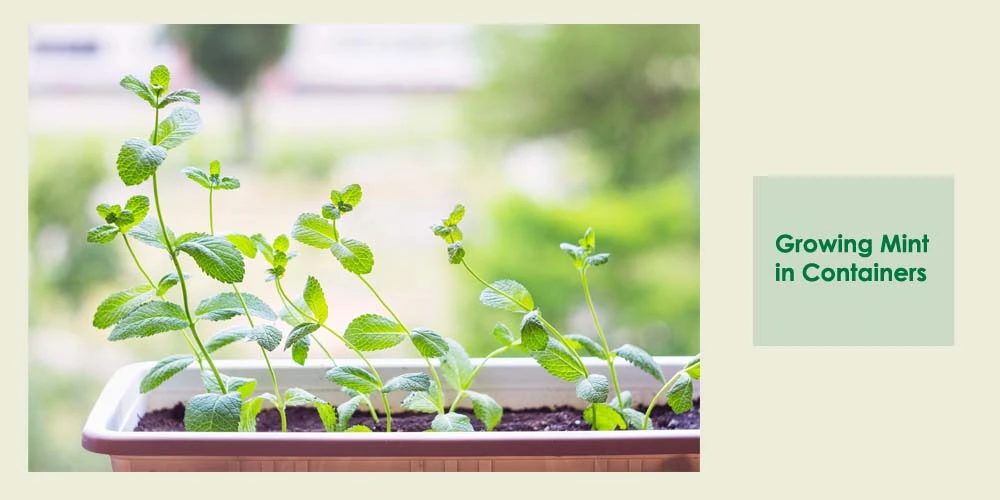
Ideally, any planting container you choose to grow in should have some drainage holes for excess water to seep out. If you are careful with your watering or selective in your plant type, you can take some leniency there.
Mint is one of those plants with a little give and take when it comes to drainage holes. Mint likes its soil to remain a little damp.
If it does not have holes in the bottom, your planting container needs to be monitored by closing when watering. Water slowly and only until the soil looks evenly moist. Never allow water to rush onto the soil too quickly or become swampy-looking.
Drainage holes in the potting container allow for a cleaner, more fail-proof method of watering. A simple fix can cause a way for the water to escape when an accidental over-watering has occurred. Besides, when set on a saucer with pebbles or flat glass beads, it will allow for natural humidity to take place for your plants.
Mint planting containers should be at least 8 inches or more in diameter and 10 inches deep. A square pot should be at least 6" and the same depth. Rectangle-style box planters can be used but be sure to keep it mint only. Mint tends to overtake other plants in the same container. It may work for a short time, for eventually, the mint will rule the container.
→ Mint loves hydroponics and aquaponics. If you are interested in growing mint with these soil-less methods, you can explore a few articles on-site related to these methods. This is a unique way to keep the trailing runner spread of the mint under control as well. Read Hydroponics Herb Gardens - Soil-less Growing here, and for a comparison of the two growing methods, you can learn more here The Difference Between Hydroponics and Aquaponics.
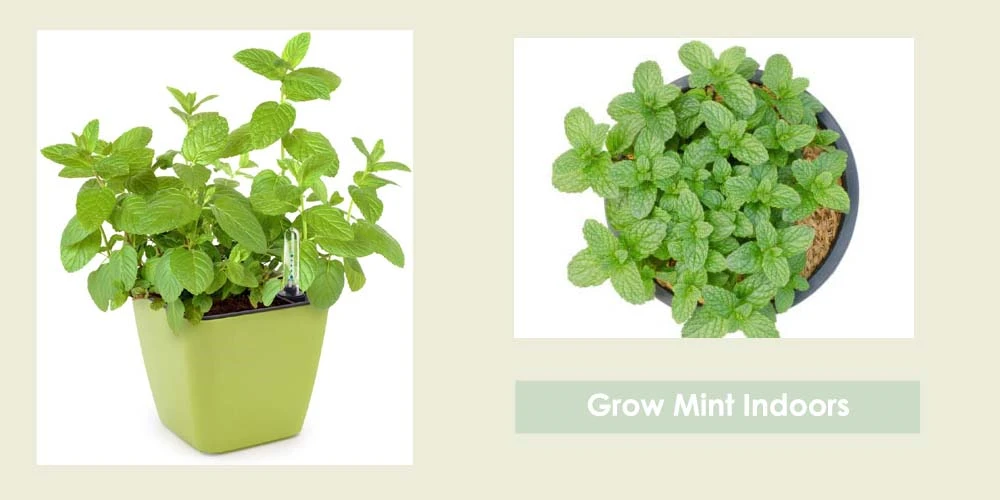
Containers are the best method; how about growing indoors?
Mint grows wonderfully indoors. It likes the consistent temperatures and, as a perennial, will have continued long-term endurance. A well-trimmed mint plant can grow happily for a few years indoors. Stems can get woody if allowed to grow for too long.
Keep your mint from flowering will keep the taste of the mint fresh and youthful. I like to keep mint growth trimmed when it reaches heights, a max height of 10 inches. This will ensure new young branches are constantly forming.
If your plant happens to begin to set flowers cut it down low to just a few sets of leaf nodes at the base of the soil and allow it to regrow.
I repot my mint every year to give a fresh mix and allow for healthy root growth. This keeps the soil healthy and full of nutrients. Mint does not require a lot of fertilizer, so repotting helps replenish what has been used by the plant. You can also add worm compost every 3 to 4 months lightly to the top of the soil for added nutrients.
Great potting soil for herbs, especially mints, is the Foxfarm Ocean Forest Organic. It is super-rich and holds the right amount of moisture very well. It works well with most herbs and plants, but my mint plants never looked better after switching to this one. You can read a complete review and decide for yourself. ⇒ Best Organic Potting Soil - Fox Farm Ocean Forest Review ⇐
Indoor spaces can offer ideal spaces for mint in terms of lighting as well. Mint does not require a lot of direct sunlight and will grow very well in low-light conditions. Rotate the mint to keep consistent growth to keep the plant from growing towards a light source.
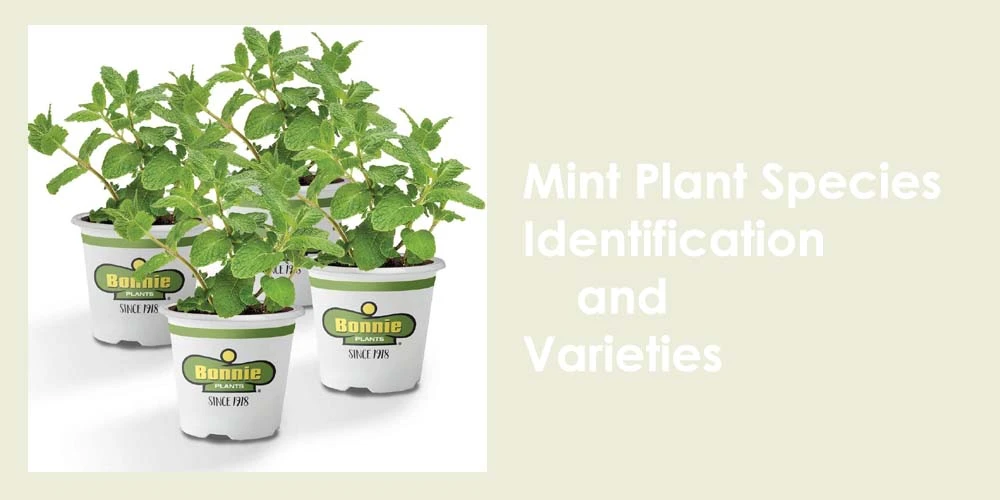
The mint family of plants is easily identifiable by its almost perfectly square-shaped stems. It is a unique feature to plants of the mint species. Leaves of different mint varieties can vary from smooth and bright to variegated, crinkled, and fussy.
A good tip for identifying mint is to do a scent test. Roll the leaves of the plant between your fingers and give it a sniff. Mints have a scent of freshness that is sweet and spicy. Most everyone is familiar with traditional mints' aroma, but some carry hints of other fragrance attachments.
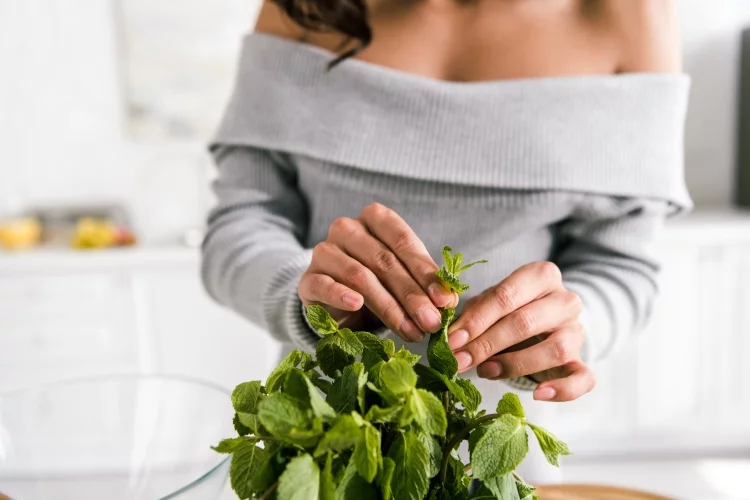
A longer leafed variety of mint. The leaves are flat, mostly smooth, and veined. They have a distinct scent that one can associate with candy canes or after-dinner mints. The taste is excellent and fresh and leaves a lingering tingle on the tongue.
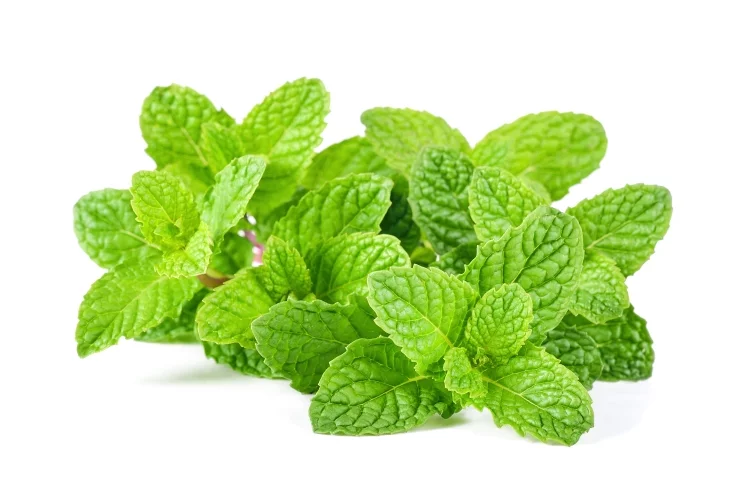
The leaves are very vibrant green and rough-textured, and crinkled. The leaf's edges are slightly spikey with more distinct edge points, but its end is rounded. The scent is more excellent than other mints, lighter with more zip. The taste is greener without the sweetness. It numbs the tongue and leaves lasting blasts of freshness.
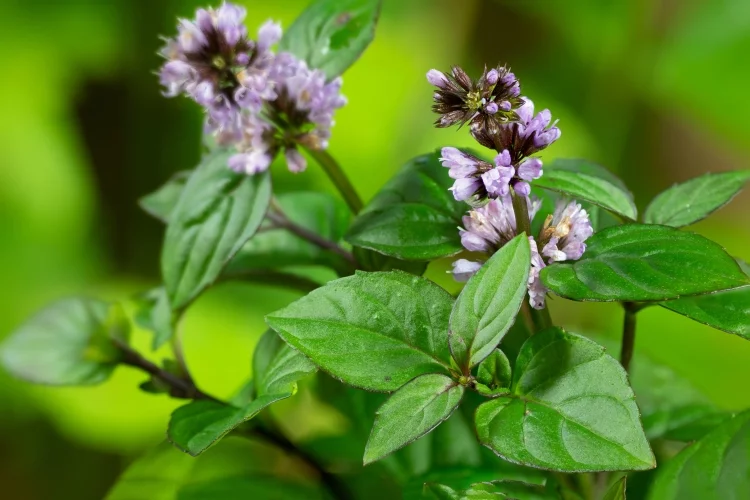
It smoothed leafed variety with a slight dome shape. The leaves are shorter than peppermint and stouter. It has a very symmetrical shape and lighter vein markings. The smell is slightly floral with hints of citrus and still the undertone of the mint. The taste is more like a lemon with a slight bitter tart versus orange, but the orange essence comes through with the mint when added to something sweet.
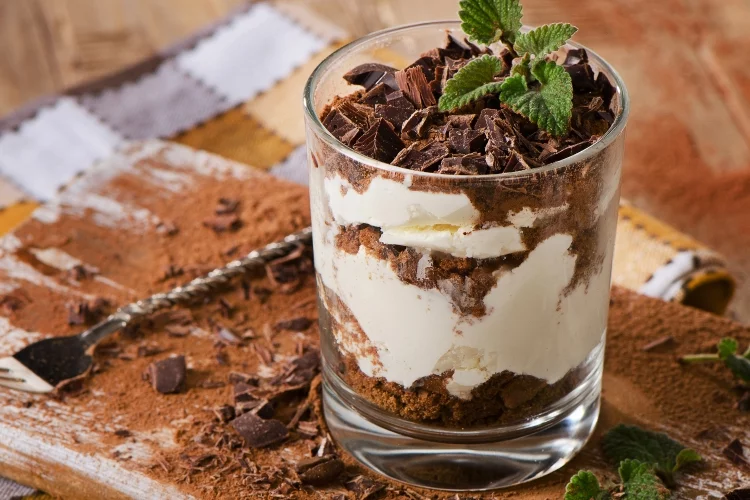
Looks very much like peppermint with just slightly shorter leaves. The stems are usually giveaway with darker ore-defined "chocolatey" colored markings. The chocolate mint is sweet. You can smell it when you crush it in your fingers. You can also taste the sweetness of this mint on your tongue. I can not say it tastes like chocolate, but it tastes excellent in chocolate desserts or any kind of. You are pictured in the image above.
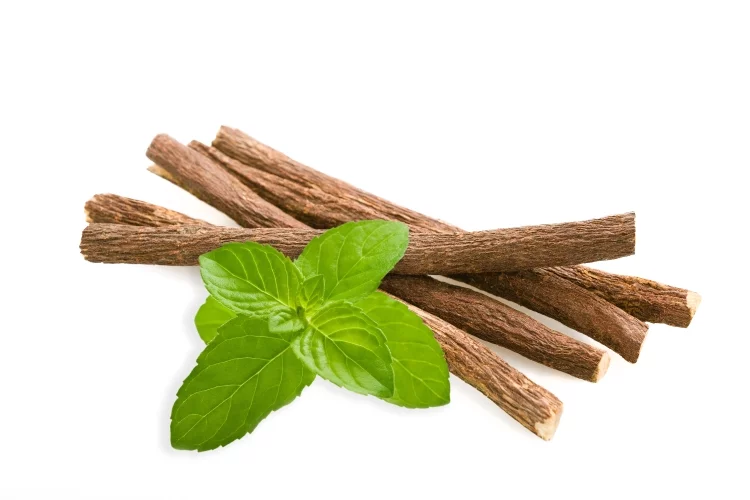
Also known as Anise hyssop, it is a tall variety of mint. It has large semi-smooth heart-shaped leaves with ridged pointed edges. The tips of the leaves come to a distinct point. The licorice mint has an anise-like flavor and smell. Its scent is powerful and often does not even requiring picking to smell it. A slight brushing, and you will get its scent. It is frequently grown for potpourri with its highly scented large purple flower spikes.
The leaves are tasty, though, and work well in salads and solid herbal teas. This is a tall variety and does well outdoors. It is also less invasive than other types of mints.
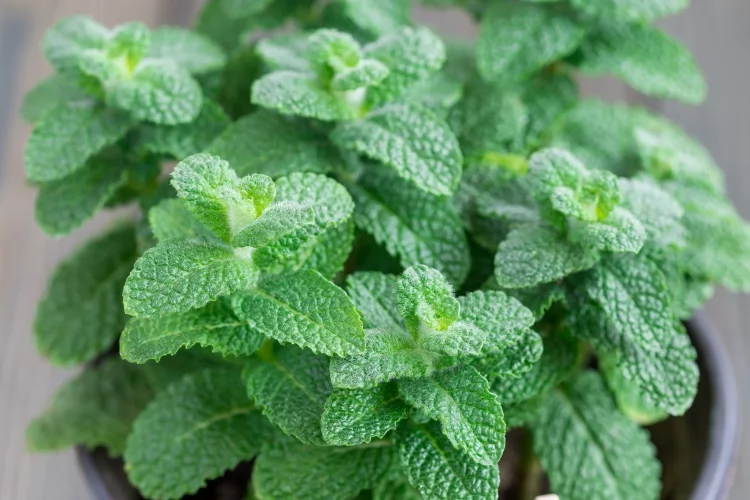
Fuzzy leafed mint has a tiny little fuss covering the leaves and stems. As the name suggests, it has a fruity aroma that can easily be associated with apples. Its flavor is less minty than other varieties and has a sweet, mild ting to it. This delicate mint works best in drinks and as an uncooked herb addition. I find it works great when making jellies and preserves for canning as well.
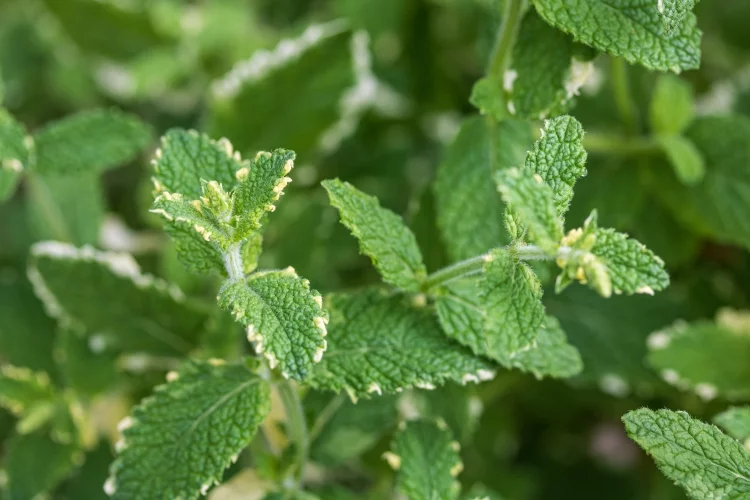
This is a very unique-looking variety of mint. The leaves are smaller, crinkled and the green edges are spotted in white. This variety is also fuzzy-leafed and stemmed. The pineapple mint has a solid sweet tropical fruit smell, much like its name implies. The taste is fruity and minty all at the same time. I think it offers the best of the sweet and mint combined. It is also one of the prettiest to grow, I guess.
There are more mint varieties than these 7, but these are the leading and most common varieties grown for herbal gardens. For a more comprehensive look at the mint species and mentha classification, you can view an article on Wikipedia.
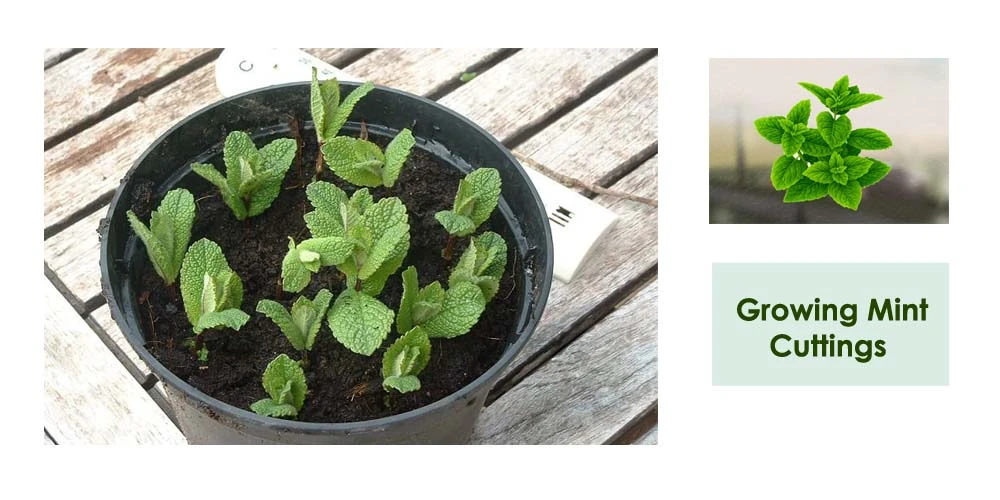
T his is the easiest way to start mint plants for your herb garden. Cuttings are clippings you take from already developed plants to create new plants.
This propagation method is used for many plants and herbs and is particularly useful for planting herbs. Mints root very well in water and form strong, healthy roots for growing.
Steps to Grow Mint from Cuttings:
Root cuttings are another alternative for large mint plants or dormant plants from the outdoors.
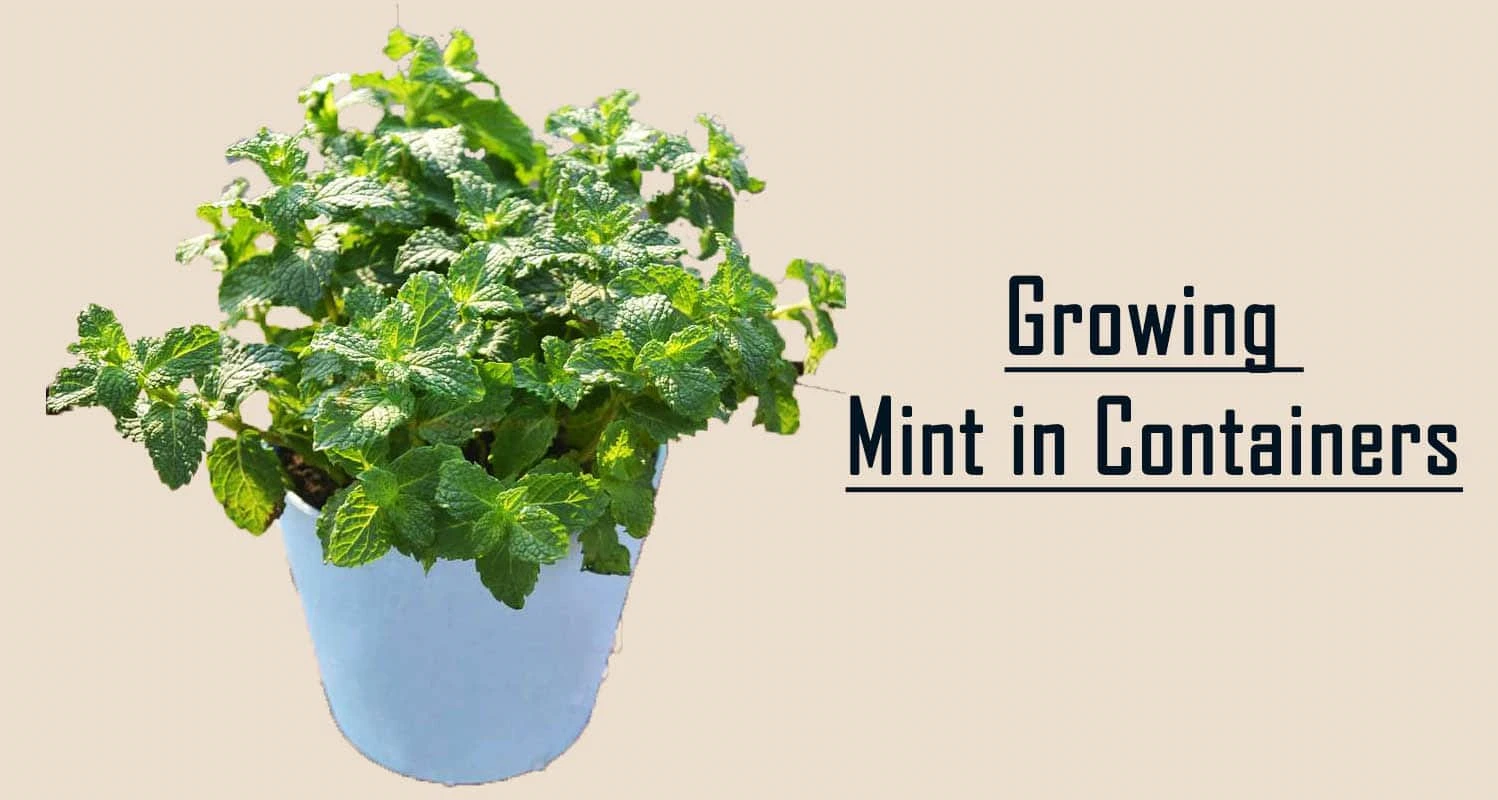
If cuttings are not available, growing mint from seed is a viable option to get mint growing in your herb garden. It also offers you the options to get different varieties you may not otherwise have available to you in your area.
An important note is that some varieties that are hybrid types cannot be grown from saved seeds. Hybrid varieties do not grow true to form. Saved seeds may grow true to one of the parents but rarely to the original seed form's mixed type.
In general, it takes 12 to 16 days for mint seeds to germinate. Mint prefers a compost-rich potting soil that holds moisture well without staying overly saturated versus typical well-draining soil.
Starting mint seeds, I have found that bio sponges or similar work much better than soil to get them to germinate. Traditional soil planting can be used but the moisture retained in the sponge environment aids in a speedier germination time.
It is fantastic to get your seeds started if you have never tried a bio sponge dome seed starter. It not only works great with mint seeds but any sources you want to grow. The surface requirements of mint seeds work great in these domes and place other seeds inside the sponge-like material.
Mint seeds need light to germinate, so they do not get buried in the planting medium but rather laid on top of the soil and gently pressed into but remaining visible on the surface. They are then covered to create a clear wrap or plastic germination lid to allow light to get to the seed.
The roots of the seedlings are shallow and tend to stay towards the top of the surface. Allow them to develop with at least three sets of true leaves before transplanting into permanent containers.
Jumpstart your herb garden with already growing mint plants. This will provide you with the quickest way to get mint growing in your indoor garden.
You can sometimes find plants at your local nursery. I have discovered spearmint once at a big box store.
Check the quality of the plant's growth, soil, and leaves before purchase. Make sure that you do not see signs of insect infestations or fungus growth. These will be brought into your garden space and could infest the rest of your plants.
I have often purchased started plants on Amazon and have had good luck with the quality of plants I received. If that is an option, you will explore, look at the seller's reviews and check how other customer's experiences went. Reviews can be valuable tools to get quality plants.
Check out a list of Live Mint Plants here that are currently available for sale.
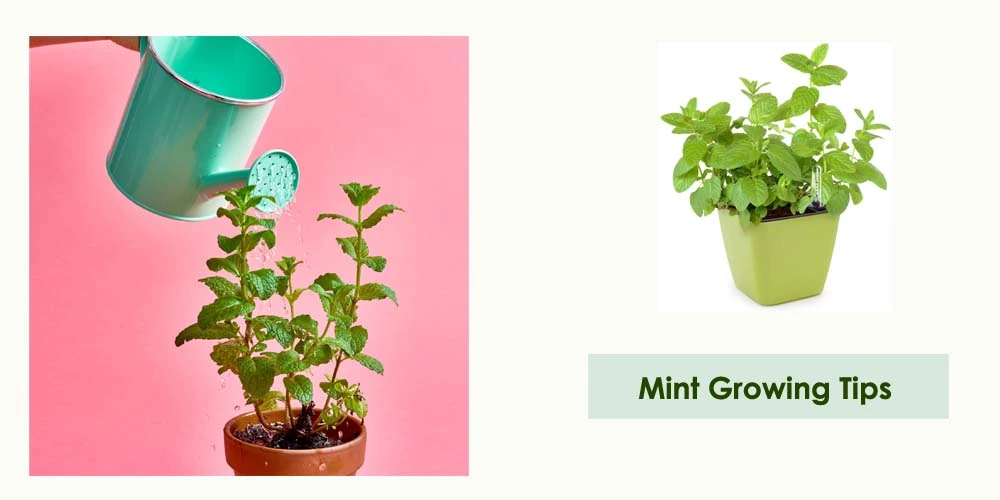
Mint is a hardy, easy grower that requires minimal care. It will not hog the sunlight from your other plants. They will be happy growing in the lower light areas of your home and partial shade. It grows very well in containers on its own. If you choose to plant it with anything else, be aware it will eventually overtake the entire container.
Helpful Mint Growing Tips in Containers
? Keep Mint moist. This plant does not like to dry out and likes evenly moist soil. Do not make the soil swampy but friendly, even moisture that spreads the top of the soil.
? Humidity is a blessing to mint. A saucer of damp pebbles to set your container on or regular misting will keep your mint very happy.
? Pick and Prune regularly for beautiful bushy plants. Trim whole stems at second or third leaf nodes from the base when they are young for great flavor and increased upright clumpy growth. Do not cut the plant bare but evenly time your trimming to get your plant to produce total growth.
? An overabundance of mint preserves perfect in regular ice cubes. Freeze whole leaves in water-filled ice cube trays for quick use to pop in a drink later.
☹ Do not overfertilize mint. It will cause the flavor too bitter and the leaves to yellow or brown. Light organic fertilizer, on occasion, is fine. I like to refresh my mint every 3 to 4 months with a handful of worm castings across the top of the soil.
☹ Harvest mint before it flowers and prevents flowering cycle by keeping it trimmed back. Flowering, although it dramatically affects taste and growth.
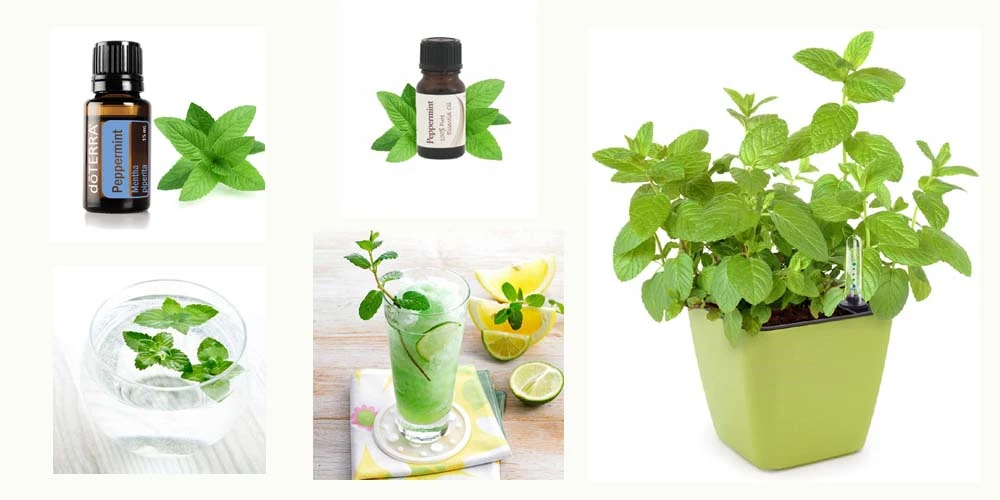
I touched briefly in the introduction of the alternative medicinal properties of mint. Like all herbs, always consult a doctor.
I will include more detailed information on the uses of Mint in the Users section of this site.
Of course, Cooking!
Tea - My favorite use of mint. I love a hot or cold mint tea or mix.
Other drinks love mint: cocktails, fruit drinks, infused waters, punches.
Salads - Green and cooked salads benefit from mint sprigs
Pasta Dishes - One of my favorite pasta dishes is Linguine with Shrimp Garlic Mint Sauce
Other meat and seafood dishes!
Growing mint in containers is best to contain vigorous mint growth and make it a staple in your indoor gardens.
I love mint and its fantastic versatility in cooking and beverages. The taste is a picker-upper that perks the taste buds.
Teas are my favorite ways to use mint. I use them both iced and hot. What is your favorite way to use mint?
Perhaps you have a favorite dish that would not be the same without adding a variety of mints?
What are you growing and using in your garden? Is it mint?
I look forward to hearing from you. Please leave your comments below, and let's start a conversation!
Happy Gardening!
 |
 |
 |
 |

About Truman Perkins
Truman Perkins is a Detroit-based SEO consultant who's been in the business for over a decade. He got his start helping friends and clients get their websites off the ground, and he continues to do so today. In his free time, Truman enjoys learning and writing about gardening - something he believes is a natural stress reliever. He lives with his wife, Jenny, and their twins in Detroit.
 |
 |
 |
 |
Get new FREE Gifts. Or latest free growing e-books from our latest works.
Disable Ad block to reveal all the links. Once done, hit a button below
 |
 |
 |
 |